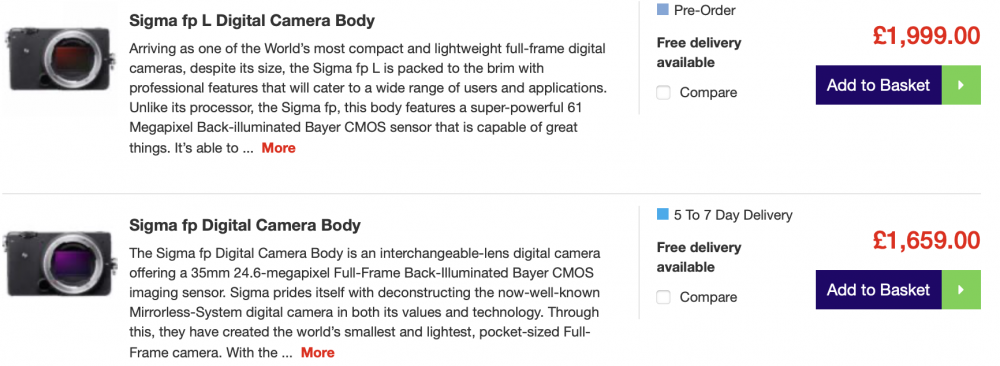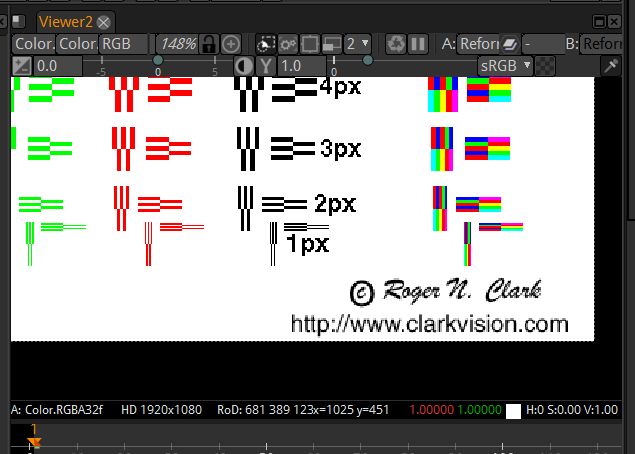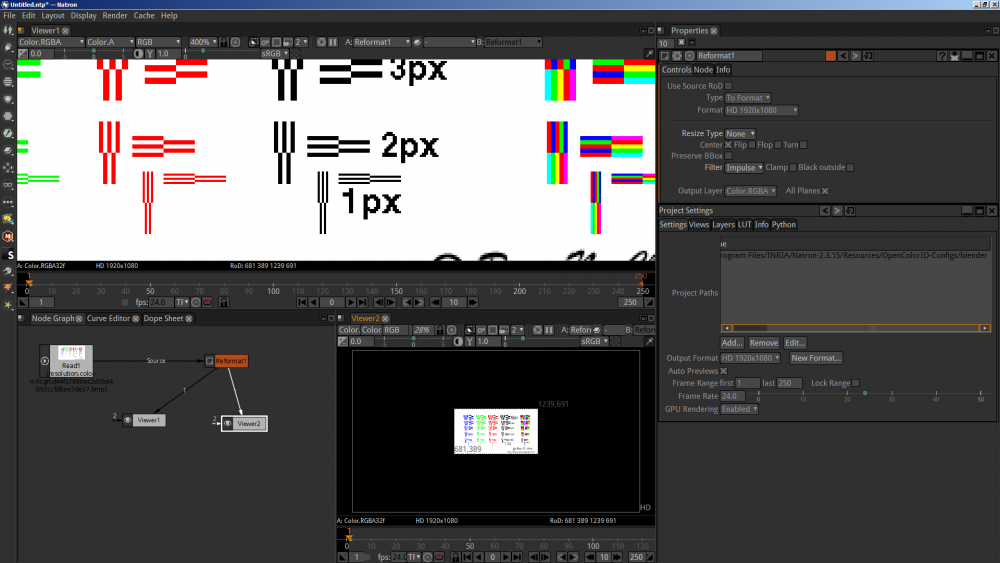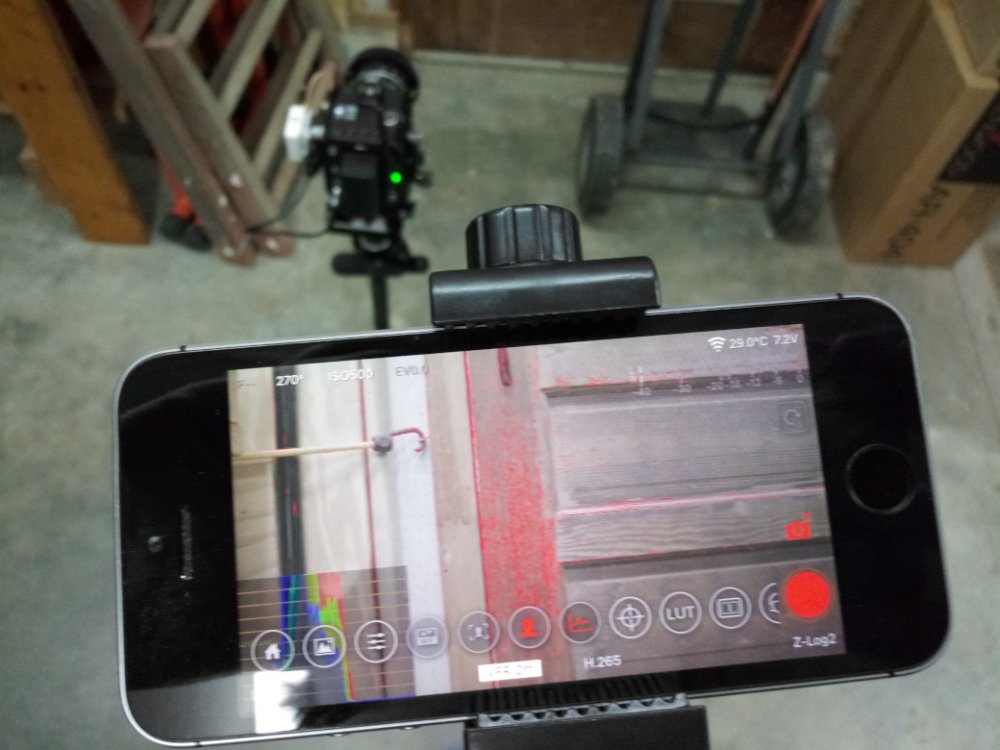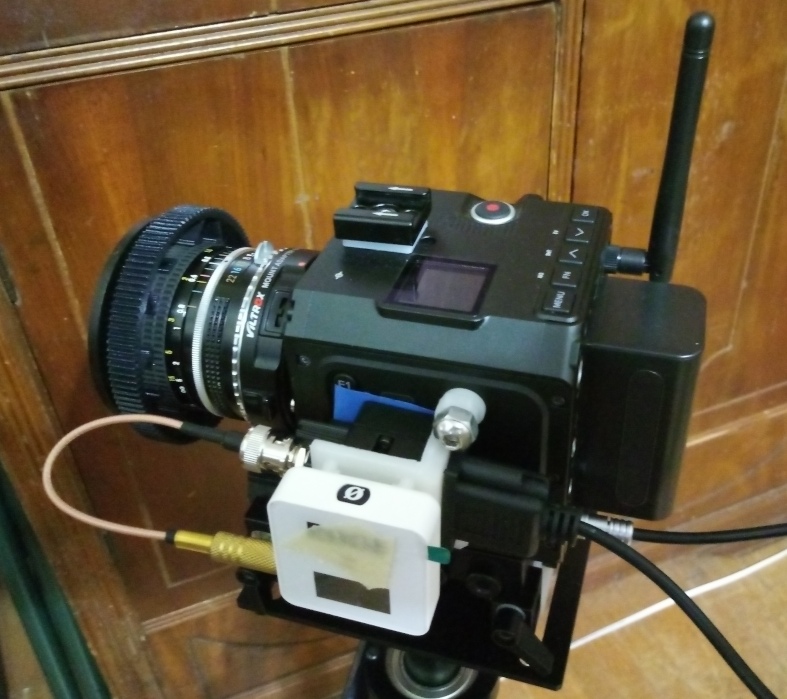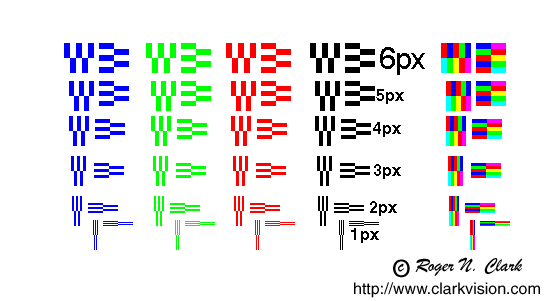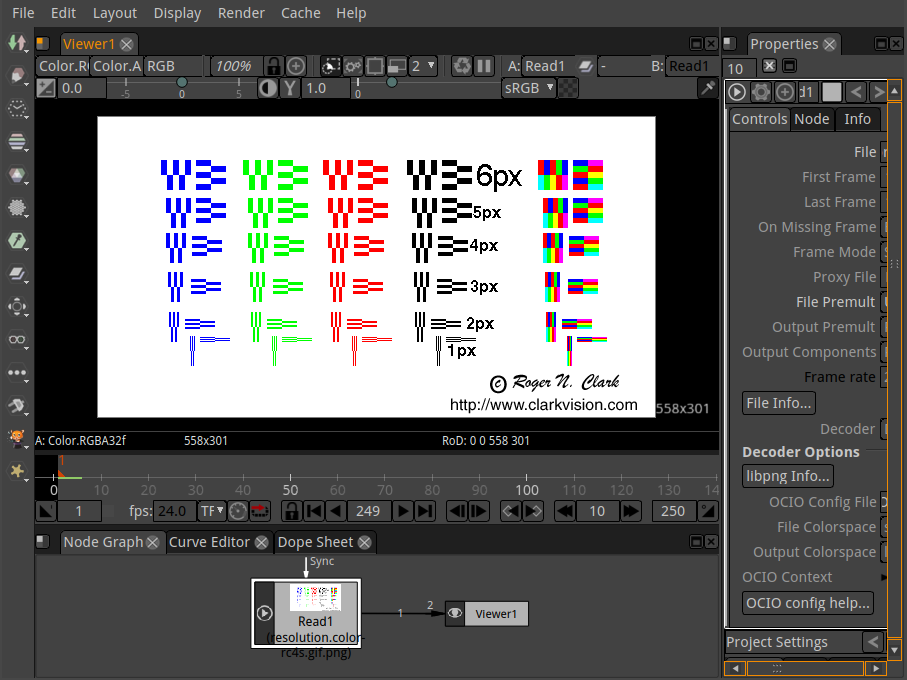Leaderboard
Popular Content
Showing content with the highest reputation on 04/22/2021 in all areas
-
Hey guys, Since the middle / end of last summer I've been making a feature length documentary. I have 3 more shoots to do, and then it can be finished. However I wanted to share a small teaser I've made in anticipation of sending it out to festivals etc. I'd love to hear all feedback, comments, criticism etc. Please don't be shy! Shot entirely handheld (apart from one shot) with BMPCC4k, Viltrox speed booster and Sigma 18-35.3 points
-
COVID safe motor control examples using a Meike 25mm mini cine prime on a Sony A6500 with Nucleus Nano motor.3 points
-
You hit the nail on the head. To say it has no users is ridiculous. It is in more line with a Blackmagic camera, but, in my opinion much less comprises and more "conveniences". More reliable and far better built. Smaller and lighter even with grip or cage, better autofocus (seems about on par with my A7rII and A7sII), a more adaptable mount than the EF 6Ks, and the entirety of the stills mode. But there are more similarities than differences. Mostly in it's use cases. Someone willing to be a little more manual, controlled, and methodical in how they shoot. This goes for photography as well. If you are mostly a single point, AFS/MF shooter like me it's great. I would also like to see the addition of a more solid compressed video option, but the 4K8bit internal is actually better than most internal codecs of others. It's surprisingly rigid when pushing it in post even being only 8bit. A fair bit of recovery, zero compression, and all the benefits of raw. Changing WB/tint to get your colors set is still better than a 10bit file. I have to test more to see how well it can do with heavy gradations. The only issue is sd storage, but that will get better over time and if you have the money for it. The question is if you need 6K or are fine with a downsampled 4K. I like the idea of 6K and been using it on my S1, but shooting raw, carrying the extra data for 6K to downsample it to 4K in post might not matter. There is no way they could incorporate 6K30 or even 4K60 as the sustained data rates are too high even for most current SSDs (in cinemaDNG). So while excepting compression is out of the picture, I'm good with it downsampling and then retaining all the data possible. There really are no alternatives, especially for full frame cameras. I feel it sits right between Blackmagic cameras and modern hybrid mirrorless cameras. A hybrid cinema camera if you will.2 points
-
The fp is by far the more spiritual successor to the original BMPCC than the BMPCC4K and 6K are. Same advantages, some of the same drawbacks. To the BMPCC it adds full frame, 4K, reasonable autofocus, better low light, better storage, an even more adaptable lens mount and now an EVF. If you were into the BMPCC and want all that you had with that and a whole lot more then the fp should probably be on your list to check out unless your needs have changed in the meantime. Similarly, I personally love the Leica T in combination with the Visoflex 020 EVF as I can have it both ways in terms of using it with the LCD or with the EVF and I can put tiny M mount lenses on it as well as electronic lenses. Again, as with the BMPCC, the fp shares the same same advantages and some of the same drawbacks. To the Leica T it adds full frame, RAW video, 4K video, far better autofocus, better low light and better storage options. In the intervening years since I've had the Leica T, the L mount range of lenses has of course come round to meet it and there are now a boatload more lens options now and at a far more affordable price. I've been droning on for a long time about how really good it is having the tilt capability of the Visoflex 020 on the Leica T and now it has come to the fp. So, again, If you were into the Leica T/TL and want all that you had with that and a whole lot more then the fp should probably be on your list to check out unless your needs have changed in the meantime. I love both of those cameras so, for me, the fp is just their logical conclusion (or close to it) so I love the fp too. Is it just limited to people who love those two cameras ? I don't think it should be but I do get why not only does it not appeal to those looking for an alternative to the usual suspects but that its appeal to others can seem quite bewildering. Sigma could probably do with adding a feature in to the fp that would be enough of a differentiation for people to say "Mmm...the Sigma can do <insert feature here> though so that is a big plus in its favour" and even up the spec chart a bit more. I think if that added feature was ProRes (regular not RAW), preferably internal but to SSD if not, then that could be the one to shake things up. Even then, though, it will likely not be for everyone and I think thats a good thing for everyone in terms of manufacturers not all producing very similar cameras.2 points
-

Camera resolutions by cinematographer Steve Yeldin
John Matthews and one other reacted to kye for a topic
The whole point of the test was to compare the perceptibility of 2K vs higher resolutions. This is the point you keep missing. Determining if there is a difference between 2K and some other resolution on a camera that no-one ever uses is a useless test. Once again, missing the point.2 points -

Camera resolutions by cinematographer Steve Yeldin
MaverickTRD and one other reacted to kye for a topic
We have, we did, and.... *sigh* Let me ask you this. If Yedlin has made such basic failures, and you claim to be sufficiently knowledgeable to be able to easily see through them when others do not, why don't you go ahead and do a test that meets the criteria you say he hasn't met? I will then proceed to persistently claim you haven't met your own criteria, criticise every line you have written in isolation, and generally take the perspective that if the test does not directly apply to every single camera ever made, every screen and every eyeball in existence then it can't have any value whatsoever. I think it will be fun, I've seen it done recently with such gusto....2 points -

Why Gerald Undone is wrong about the Sigma Fp-L
OniBaba and one other reacted to Andrew Reid for a topic
You can still disagree with someone you respect, you know.2 points -
Why Gerald Undone is wrong about the Sigma Fp-L
ArashM and one other reacted to newfoundmass for a topic
Maybe save that criticism for the Matti Haapoja's and Peter McKinnon's of YouTube and not the guy that does rather dry long form reviews and regularly criticizes the things you think he's trying to sell? I say this as a very vocal critic of the YouTube filmmaking bubble. I don't always agree with Gerald but it's ridiculous to act as though he's looking to maximize clicks and affiliate sales. His videos would be under 10 minutes and feature him pouring coffee (gotta get that pouring sound!), riding a one wheel around, and otherwise pretending to have a far more exciting life than he does, all while talking about how awesome x is and that you should definitely check those affiliate links down below! At least be fair if you're gonna criticize the guy.2 points -

Panasonic S1 V-LOG -- New image quality king of the hill
zerocool22 and one other reacted to Parker for a topic
I'm more and more pleased with this camera all the time. I recently purchased the 1.5x aivascope anamorphic adapter (amber flare) and, paired with my trusty Helios 44-2, a little black pro mist, and of course that thick V-Log image, this little Easter Weekend run-and-gun lens test I shot last week felt effortlessly cinematic: (this was even before the big firmware 2.0 update, so now I'm even more excited to try out some of the new anamorphic ibis modes and especially that 6k, 3:2 open-gate/full sensor mode.) Also: 12-bit, 5.9k anamorphic Pro Res Raw, anyone?! 🤯 The S1 is going for like $1500 used these days. Absolutely incredible what it's capable of. The best bang-for-buck in the camera world right now 👌🏻2 points -
If 2K and 4K+ are only perceptually different with cameras that are very uncommon then who cares. You might care about this as a theoretical exercise for its own sake, but I'd suggest that not many other people do. If this was a thread comparing perceptual differences between 600x400 and 640x480 then no-one would have cared because it doesn't apply to the real world or to our lives in any way. This thread is only useful because of its applicability. See my above point.1 point
-
Why Gerald Undone is wrong about the Sigma Fp-L
currensheldon reacted to Anaconda_ for a topic
I've not noticed any rolling shutter on line, in video or photo. However, I don't really like the photos that come out of it. Something is off with them, and I can't put my finger on it. I get nicer pictures with my XT3 99% of the time, and as you might expect, it's 200x more fun to take a photo with the Fuji. That said, which ever camera is in my hand will capture a moment better than the one in my bag.1 point -
Yeah, well resolve has a whole slew of controls in the raw adjustment settings area, you could do a complete grade just from that one section, contrast, shadow/highlight recovery, WB, saturation. FCP offers WB and exposure adjustment. Everything else needs a plug-in added to adjust. And the raw adjust is in the footage’s info section, and you can’t copy it from one clip to the next, the whole thing just doesn’t seem all that intuitive.1 point
-
I've heard zoom lenses are super tricky to service, so you wouldn't be alone. Also, unless it's an Angenieux or something then it doesn't really matter - most of the zoom lenses ever made are cheap now because they were common in the past and undesirable now. I've recently started exploring the FB film-making and equipment groups and vintage lenses with dented filter rings are common, people posting "I bought this lens from a seller who said 'no fungus' but look at these pictures - should I return it?" is common, and I've seen more than one post of "I'm abandoning my attempt to convert my collection of <famous vintage lens name> lenses, lens repairer X quoted me $Y and all the parts are here - offers above $Z please".1 point
-
Teaser for my new doc
Anaconda_ reacted to scotchtape for a topic
If you want some criticisim: Shot matching could be a bit better (contrast especially). Voice EQ could be a bit better, but from the sounds of it audio was on a budget so there's only so much you can do. Highlights seem a bit nuclear (maybe combine with the high contrast makes it more noticeable).1 point -
1 point
-
i'm embarrassed to confess... i have a botched attempt sitting at the back of my desk. Not too many issues with a prime, but i come unstuck with a zoom. Fiddly little buggers 😳 It sits there to remind me about biting off more than i can chew at times. One day i might get it repaired if i stumble across a suitable repairer. not sure what age i got a camera but the last film camera was a canon t90 which still works. never dropped a lens in all that time. Everything made by man can use a little maintenance from time to time. Thats just how it is.1 point
-
You forgot about people dropping them, fungus, rust, and botched attempts to fix them. In terms of getting on the bandwagon earlier, I bet these manual lenses were at rock bottom prices when AF reached significant market penetration, so that was probably the time to buy. I bet if you went to the right places you could have bought boxes of them, maybe by weight.1 point
-
I have and use both. The menu separation between photo and video is nice on the T4, as is the switch between photo and video modes. Another thing I like about the T4 is that you can easily select for audio line level in or mic level in. I haven't found a setting to do that on the T3, so if it's possible it's either buried in the menu system somewhere or I'm a dummy. As for the screen, coming from Canon I didn't like the T3's screen articulation when I bought it. A full on flip screen is definitely better for some extremely low and high angle shots and a must for any kind of selfie work or if you are recording an interview on sticks and positioned beside the camera to talk to talent. But, on the other hand, I've come to appreciate the way the T3's screen tilts up and down from it's position in line with body. For some hand-held filming styles it works much better than the screen flipped out to the side and tilted.1 point
-
i'm the opposite i guess, i do enjoy a good flare 😀 its been awhile since i checked ebay... Those prices seemed to of really jumped up. In aussie $ i could get a 50mm f1.4 ssc for $150 or so the 50mm f1.2 jump up to $500 for an average one, then an L series starts at like $1000. Should probably remortgage the house, buy a couple and pray the price keeps going up. 😀 the thing is apart from some models having the dissolving bearing issue, most vintage lens should last a good long time. When you think about it vintage stuff is made from metals that are machined with close tolerances and are rotating less than 360 degrees, with a supply of grease. Most likely you could call that pretty much, the optimum situation for a machine. Barr working in the artic perhaps. i think the bigger problem is lens reviews like mark holtze and zenography waxing lyrical on the youtube reviews. Still i cant complain.... perhaps i myself, should have jumped on the bandwagon earlier 😉1 point
-
Why Gerald Undone is wrong about the Sigma Fp-L
seanzzxx reacted to newfoundmass for a topic
What did trans folk have to do with any of this? You decided to rant about them for no reason. Pointing that out isn't an attempt to make you feel bad, you don't have that kind of awareness or empathy, it was a genuine reaction to an unhinged rant about trans people in a post about a camera. I'm not going to derail this thread and will simply move on and ignore you.1 point -
Blackmagic Micro Cinema Super Guide and Why It Still Matters
PannySVHS reacted to austinchimp for a topic
Beautiful. Videos like this are the counterargument to the technical assertion that "every camera is the same, you just need to know how to process the images correctly". Yes, maybe that is technically true, but how much work and how many hours would you need to put into a Sony A7s or a GH5 to get it to have this emotional weight and texture? Something about these old Blackmagic sensors is just magical, it feels like memories. Lovely for you to have captured precious moments like this.1 point -

Why Gerald Undone is wrong about the Sigma Fp-L
PannySVHS reacted to Andrew Reid for a topic
This is a very small premium to jump from 24MP to 61MP by the way. That is class leading resolution. I am not suggesting this is the right camera for video users, but they did their best not to sacrifice anything on that side either. It still does 12bit 4K RAW, which is pretty amazing from 61MP. The A7R IV doesn't do that does it? Yet Sony charge a much bigger premium for high resolution, compared to the standard model A7 III. So for a lot of landscape photographers this is going to be a great deal, and for a lot of cine shooters who also need a compact high resolution camera (medium format league resolution!) what is the alternative exactly?1 point -
I wouldn't say he is a Sony guy. He is using BM cameras as well and he seems always loyal to simplicityon working sets. He offered not to release his opinion on FP-L as he knew that he couldn't hide the truth he discovered. That's very fair for him and honorable for Sigma that didn;t try to cover up his gray opinion. I trully respect him.1 point
-
Blackmagic Micro Cinema Super Guide and Why It Still Matters
PannySVHS reacted to alvaromedina for a topic
This video was shot entirely with the pocket and the panny 14mm 2.5...the exposure and the color grading sometimes is really bad, but overall I really like the organic texture it has, like old indie feature films. And as you says, despite of being a 14mm, with the 2.88x crop turns out to be a very good close up lens for people, I don´t see any distortion on human faces when they are close to the camera. pass: vacaciones1 point -
Why Gerald Undone is wrong about the Sigma Fp-L
OniBaba reacted to currensheldon for a topic
Yes, the Youtube influencer machine is awful, but Gerald is the least offensive offender. He does all technical reviews, true, but at least he does a thorough and honest job. Only CVP is anywhere close to the usefulness of his reviews from a pure tech standpoint.1 point -
Camera resolutions by cinematographer Steve Yeldin
MaverickTRD reacted to slonick81 for a topic
So Natron we go! As you can see, latest win version with default settings shows no subsampling on enlarged view. The only thing we should care about is filter type in reformat node. It complements original small 558x301 image to FHD with borders around, but centering introduces 0.5 pixel vertical shift due to uneven Y dimension of original image (301 px) so "Impulse" filter type is set for "nearest neighbour" interpolation. If you uncheck "Center" it will place our chart in bottom left corner and remove any influence of "Filter" setting. The funniest thing is that even non-round resize in viewer won't introduce any soft subsampling with these settings. You can notice some pixel line doubling but no soft transitions. And yes, I converted the chart to .bmp because natron couldn't read .gif. It's the only thing you're percieving. Unless you're Neuralink test volunteer, maybe. Well, that's how any kind of compositing is done. CG artist switches back and forth from "fit in view" to any magnification needed for the job, using "1:1" scale to justify real details. Working screen resolution can be any, the more the better, of course, but for the sake of working space for tools, not resolution itself. And this is exactly what Yedlin is doing: sitting in his composing suite of choice (Nuke), showing his nodes and settings, zooming in and out but mostly staying at 1:1, grabbing at resolution he is comfortable with (thus 1920x1280 file - it's a window screen record from larger display) In general: I mostly posted to show one simple thing - you can evaluate footage in 1:1 mode in composer viewer, and round multiple scaling doesn't introduce any false details. I considered it as a given truth. But you questioned it and I decided to check. So, for AE, PS, ffmpeg, Natron and most likely Nuke it's true (with some attention to settings). Сoncerning Yedlin's research - it was made in a very natural way for me, as if I was evaluating footage myself, and it summarised well a general impression I got working on video/movie productions - resolution is not a decisive factor nowdays. Like, for last 5 years I need one hand's fingers to count projects when director/DoP/producer was seeking intentionally for more resolution. You see it wrong or flawed - fine, I don't feel any necessity to change your mind, looks like it's more a kye's battle to fight.1 point -

Camera resolutions by cinematographer Steve Yeldin
solovetski reacted to kye for a topic
This is my concern too. Hopefully I have dissuaded them from your arguments sufficiently. Once again, you're deliberately oversimplifying this in order to try and make my arguments sound silly, because you can't argue against their logic in a calm and rational way. This is how a camera sensor works: Look at the pattern of the red photosites that is captured by the camera. It is missing every second row and every second column. In order to work out a red value for every pixel in the output, it must interpolate the values from what it did measure. Just like upscaling an image. This is typical of the arguments you are making in this thread. It is technically correct and sounds like you might be raising valid objections. Unfortunately this is just technical nit-picking and shows that you are missing the point, either deliberately or naively. My point has been, ever since I raised it, that camera sensors have significant interpolation. This is a problem for your argument as your entire argument is that Yedlins test is invalid because the pixels blended with each other (as you showed in your frame-grabs) and you claimed this was due to interpolation / scaling / or some other resolution issue. Your criticism then is that a resolution test cannot involve interpolation, and the problem with that is that almost every camera has interpolation built-in fundamentally. I mentioned bayer sensors, and you said the above. I showed above that bayer sensors have less red photosites than output pixels, therefore they must interpolate, but what about the Fuji X-T3? The Fuji cameras have a X-Trans sensor, which looks like this: Notice something about that? Correct - it too doesn't have a red value for every pixel, or a green value for every pixel, or a blue value for every pixel. Guess what that means - interpolation! "Scanning back" you say. Well, that's a super-broad term, but it's a pretty niche market. I'm not watching that much TV shot with a medium format camera. If you are, well, good for you. And finally, Foveon. Now we get to a camera that doesn't need to interpolate because it measures all three colours for each pixel: So I made a criticism about interpolation by mentioning bayer sensors, and you criticised my argument by picking up on the word "debayer" but included the X-Trans sensor in your answer, when the X-Trans sensor has the same interpolation that you are saying can't be used! You are not arguing against my argument, you are just cherry picking little things to try and argue against in isolation. A friend PM'd me to say that he thought you were just arguing for its own sake, and I don't know if that's true or not, but you're not making sensible counter-arguments to what I'm actually saying. So, you criticise Yedlin for his use of interpolation: and yet you previously said that "We can determine the camera resolution merely from output of the ADC or from the camera files." You're just nit-picking on tiny details but your argument contains all manner of contradictions.1 point -

Camera resolutions by cinematographer Steve Yeldin
MaverickTRD reacted to kye for a topic
@tupp Your obsession with pixels not impacting the pixels adjacent to them means that your arguments don't apply in the real world. I don't understand why you keep pursuing this "it's not perfect so it can't be valid" line of logic. Bayer sensors require debayering, which is a process involving interpolation. I have provided links to articles explaining this but you seem to ignore this inconvenient truth. Even if we ignore the industry trend of capturing images at a different resolution than they are delivered in, it still means that your mythical image pipeline that doesn't involve any interpolation is limited to cameras that capture such a tiny fraction of the images we watch they may as well not exist. Your criticisms also don't allow for compression, which is applied to basically every image that is consumed. This is a fundamental issue because compression blurs edges and obscures detail significantly, making many differences that might be visible in the mastering suite invisible in the final delivered stream. Once again, this means your comparison is limited to some utopian fairy-land that doesn't apply here in our dimension. I don't understand why you persist. Even if you were right about everything else (which you're not), you would only be proving the statement "4K is perceptually different to 2K when you shoot with cameras that no-one shoots with, match resolutions through the whole pipeline, and deliver in a format no-one delivers in". Obviously, such a statement would be pointless.1 point -

Camera resolutions by cinematographer Steve Yeldin
MaverickTRD reacted to kye for a topic
Yes and no - if the edge is at an angle then you need an infinite resolution to avoid having a grey-scale pixel in between the two flat areas of colour. VFX requires softening (blurring) in order to not appear aliased, or must be rendered where a pixel is taken to have the value of light within an arc (which might partially hit an object but also partially miss it) rather than at a single line (with is either hit or miss because it's infinitely thin). Tupp disagrees with us on this point, but yes. I haven't read much about debayering, but it makes sense if the interpolation is a higher-order function than linear from the immediate pixels. There is a cultural element, but Yedlins test was strictly about perceptibility, not preference. When he upscales 2K->4K he can't reproduce the high frequency details because they're gone. It's like if I described the beach as being low near the water and higher up further away from the water, you couldn't take my information and recreate the curve of the beach from that, let alone the ripples in the sand from the wind or the texture of the footprints in it - all that information is gone and all I have given you is a straight line. In digital systems there's a thing called the nyquist frequency which in digital audio terms says that the highest frequency that can be reproduced is half the sampling rate. ie, the highest frequency is when the data goes "100, 0, 100, 0, 100 , 0" and in the image the effect is that if I say that the 2K pixels are "100, 0, 100" then that translates to a 4K image with "100, ?, 0, ?, 100, ?" so the best we can do is simply guess what those pixel values were, based on the surrounding pixels, but we can't know if one of those edges was sharp or not. The right 4K image might be "100, 50, 0, 0, 100, 100" but how would we know? The information that one of those edges was soft and one was sharp is lost forever.1 point -
Z-CAM E2 Sticky Thread
mercer reacted to KnightsFan for a topic
I got my E2 at the beginning of last year, used it twice, and then it sat in a closet all during the pandemic. Now that my crew and I are getting our vaccines, I'm starting to kit out and practice with the camera a little. I'm still very happy with it. One of the best things I did was get this chest strap to mount my phone. I got it for gimbal use, but it's actually really nice when the camera is on a tripod as well, if I'm setting up lights or am one-man-banding it and need to hold a boom pole. I just look down and see this video feed--neat! Latency on par with the HDMI latency from my old NX1. Maybe not something I'd bring on a budgeted pro shoot, but considering the phone was free, its a great value. I hope to get a better phone soon with a bigger and better screen, both because I need a new phone and it will be a better monitor. This is what I see when I look down: I like a minimal setup that is as lightweight as possible, and in particular is easy to move between tripod and glidecam. With it stripped down, and with the glidecam's top plate modified, it's light enough to use without an arm if necessary. The worst part is the absolutely atrocious timecode adapter with its ridiculously long cable with a heavy adapter at the end. I whipped up a bracket to mount it for my shots today, and am working on a more elegant solution. So yes, it does block the Cfast door in this picture. I'll probably also ditch the Viltrox focal reducer. It flares too easily. So what does all that get? Well, with no actors I took videos of flowers. This I shot from my glidecam with the Nikon 28mm in the pic above. And this one with a Nikon 105mm AI. It was shot at 160fps which is why you see a bit more noise. Both have noise reduction off, and none added in post. Actually these are both worst case for noise as they were shot in the "Low Jello" mode that reduces rolling shutter. Probably not necessary for the shot below, but it is nice for gimbal shots like the one above.1 point -

Camera resolutions by cinematographer Steve Yeldin
MaverickTRD reacted to kye for a topic
I think perhaps the largest difference between video and video games is that video games (and any computer generated imagery in general) can have a 100% white pixel right next to a 100% black pixel, whereas cameras don't seem to do that. In Yedlins demo he zooms into the edge of the blind and shows the 6K straight from the Alexa with no scaling and the "edge" is actually a gradient that takes maybe 4-6 pixels to go from dark to light. I don't know if this is do to with lens limitations, to do with sensor diffraction, OLPFs, or debayering algorithms, but it seems to match everything I've ever shot. It's not a difficult test to do.. take any camera that can shoot RAW and put it on a tripod, set it to base ISO and aperture priority, take it outside, open the aperture right up, focus it on a hard edge that has some contrast, stop down by 4 stops, take the shot, then look at it in an image editor and zoom way in to see what the edge looks like. In terms of Yedlins demo, I think the question is if having resolution over 2K is perceptible under normal viewing conditions. When he zooms in a lot it's quite obvious that there is more resolution there, but the question isn't if more resolution has more resolution, because we know that of course it does, and VFX people want as much of it as possible, but can audiences see the difference? I'm happy from the demo to say that it's not perceptually different. Of course, it's also easy to run Yedlins test yourself at home as well. Simply take a 4K video clip and export it at native resolution and at 2K, you can export it lossless if you like. Then bring both versions and put them onto a 4K timeline, and then just watch it on a 4K display, you can even cut them up and put them side-by-side or do whatever you want. If you don't have a camera that can shoot RAW then take a timelapse with RAW still images and use that as the source video, or download some sample footage from RED, which has footage up to 8K RAW available to download free from their website.1 point -
Camera resolutions by cinematographer Steve Yeldin
MaverickTRD reacted to KnightsFan for a topic
I'm going to regret getting involved here, but @tuppI think you are technically correct about resolution in the abstract. But I think that Yedlin is doing his experiments in the context of real cameras and workflow, not an abstract. I mean, it's completely obvious to anyone who has ever played a video game that there is a huge, noticeable difference between 4k and 2k, once we take out optical softness, noise, debayering artifacts, and compression. If we're debating differences between Resolutions with a capital R, let's answer with a resounding "Yes it makes a difference" and move on. The debate only makes sense in the context of a particular starting point and workflow because in actual resolution on perfect images the difference is very clear. And yeah, maybe Yedlin isn't 100% scientific about it, maybe he uses incorrect terms, and I think we all agree he failed to tighten his argument into a concise presentation. I don't really know if discussing his semantics and presentation is as interesting as trying to pinpoint what does and doesn't matter for our own projects... but if you enjoy it carry on 🙂 I will say that for my film projects, I fail to see any benefit past 2k. I've watched my work on a 4k screen, and it doesn't really look any better in motion. Same goes for other movies I watch. 720p to 1080p, I appreciate the improvement. But 4k really never makes me enjoy it any more.1 point -

Camera resolutions by cinematographer Steve Yeldin
MaverickTRD reacted to kye for a topic
A 4K camera has one third the number of sensors than a 4K monitor has emitters. This means that debayering involves interpolation, and means your proposal involves significant interpolation, and therefore fails your own criteria.1 point -
I have a similar project that I shot with the BMMCC and the Cosmicar 12.5/1.9 C-mount and the Voigtlander 42.5/0.95 so I'll have to do the same re-cut process to remove all shots that don't include a model release! I also have an OG BMPCC on its way to me, so am planning on lots more outings with it, likely with the 7.5/2 and 14/2.5, but also perhaps with the 14-42 or 12-32 kit lenses, which have OIS, so should be much more stable 🙂1 point
-

Camera resolutions by cinematographer Steve Yeldin
MaverickTRD reacted to tupp for a topic
There is a way to actually test resolution which I have mentioned more than once before in this thread. -- test an 8K image on an 8K display, test a 6K image on a 6K display, test a 4K image on a 4K display, etc. That scenario is as exact as we can get. That setup is actually testing true resolution. Huh? Not sure how that scenario logically follows your notion that "there is no exact way to test resolutions," even if you ignore the simple, straightforward resolution testing method that I have previously suggested in this thread. What you propose is not actually testing resolution. Furthermore, it is likely that the "typical image pipeline" for video employs the same resolution throughout the process. In addition, if you "zoom in," you have to make sure that you achieve a 1-to-1 pixel match with no pixel blending (as stressed by Yedlin), if you want to make sure that we are truly comparing the actual pixels. However, zooming-in sacrifices color depth, which could skew the comparison. You don't say? He also laid out the required criteria of a 1-to-1 pixel match, which he did not achieve and which you dismiss. TWO points: Yedlin's downscaling/upscaling method doesn't really test resolution which invalidates the method as a "resolution test;" Yedlin's failure to meet his own required 1-to-1 pixel match criteria invalidates the analysis. Yedlin took the very first 4 minutes and 23 seconds in his video to emphasize the 1-to-1 pixel match and its importance. Such a match is required for us to view "true, 4K pixels," as stated by Yedlin. If we can't see the true pixels, we can't conclude much about the discernability of resolutions. Without that 1-to-1 pixel match we might as well just view the monitor through a 1/2 Promist filter. Yedlin didn't achieve that 1-to-1 pixel match, as you have already admitted. No. I stated that there is some form of blending and/or interpolation happening. I suspect that the blending/interpolation occurs within the viewer of Yedlin's node editor. He should have made straight renders for us to view, and included a pixel chart at the beginning of those renders. Yes, but, again, the problem could begin with Yedlin's node editor viewer. I did not describe it as "scaling." As I have said, it appears to be some form of blending/interpolation. Compression could contribute to the problem, but it is not certain that it is doing so in this instance. Not that I claimed that it was "scaling," but whether or not we commonly see images "scaled" has no bearing on conducting a true resolution test. Compare differences in true resolutions first, and discuss elsewhere the effects of blending, interpolation, compression and scaling. It is plain what Yedlin meant by saying right up front in his video that a rigorous resolution test uses a 1-to-1 pixel match to show "true 4K pixels." Evidently, it is you who has misinterpreted Yedlin. Again, if you think that a 1-to-1 pixel match is not important to a resolution test, you really should confront Yedlin with that notion.-1 points -

Camera resolutions by cinematographer Steve Yeldin
MaverickTRD reacted to tupp for a topic
Thank you for taking the time to create a demo. I agree that achieving a 1-to-1 pixel match when outputting is easy, and I stated so earlier in this thread: Indeed, with vigilant QC, a 1-to-1 pixel match can be maintained throughout an entire "imaging pipline." However, Yedlin did not achieve such a pixel match, even though he spoke for over 4 minutes on the importance of a 1-to-1 pixel match for his resolution comparison. I do appreciate your support, but your presentation doesn't seem conclusive. Perhaps I have misunderstood what you are trying to demonstrate. After opening your demo image on a separate tab, the only things that seem to be cleanly rendered without any pixel blending, is the thinner vertical white line (a precise three pixels wide) and the wider horizontal white line (a precise six pixels wide). The other two white lines suffer from blending. Everything else in the image also suffers from pixel blending. If you make another attempt, please use this pixel chart as your original image, as it gives more, clearer information: If the chart rulings labled "1" are a clean, single-pixel wide, then you have achieved a 1-to-1 pixel match. Not that it matters, but there is no doubt that in "real life" many shooters capture at a certain resolution and maintain that same resolution throughout the "imaging pipline" and then output at that very same resolution. Judging from quite a few of the posts on the EOSHD forum, many people don't even use lower res proxy files during editing. Regardless, when testing for differences in discernabillity from various resolutions, it is important to control all of the variables other than resolution, as other variables that run wild and uncontrolled can muddle any slight discernability distinction between different resolutions. If we allow such varibles to eliminate the discernability differences in the results, then what is the point of testing different resolutions? The title of Yedlin's comparison video is "Camera Resolutions," and we cannot conclude anything about differing resolutions until we eliminate the influence of all variables (other than resolution) that might muddle the results. Judging from the video's title title and from Yedlin's insistence on a 1-to-1 pixel match, Yedlin's comparison should center around detecting discernability differences of various resolutions. However, it appears that we agree that Yedlin is actually testing scaling methods and not resolution, as I (and others) have stated repeatedly: Once again, I appreciate your support. On the other hand, even if the subject of Yedlin's comparison is scaling methods and other image processing effects, his test is hardly exhaustive nor conclusive -- there are zillions of different possible scaling and image processing combinations, and he shows only three or four. Considering the countless possible combinations of scaling and/or image processing, it is slipshod reasoning to conclude that there is no practical difference between resolutions, just because Yedlin used some form of scaling/image-processing and in "real life" others may also use some form of scaling/image-processing. Such coarse reasoning is analogous to the notion that there is no difference between Nickleback and the Beatles, because, in "real life," both bands used some form of guitars and drums. There are just too many possible scaling/image-processing variables and combinations in "real life" for Yedlin to properly address, even within his lengthy video. Shooting and outputting in the same resolution probably isn't rare. I would guess that doing so is quite common. However, until someone can find some actual statistics, we have no way of knowing what is the actual case. In addition, I would guess that most digital displays are not projectors. Certainly, there might be existing sales statistics on monitor sales vs. projector sales. In a resolution tests, all such variables should be controlled/eliminated so that they do influence the results. Please cite those reasons covered by Yedlin. Again, we agree here and I have touched on similar points in this thread: Did you just recently learn that some camera manufacturers sometimes "fudge" resolution figures by counting photosites instead of RGB pixel groups? Did you forget that not all 4K sensors have a Bayer matrix?: Also, did you forget that I have already covered such photosite/pixel-group counting in this thread?: Not that it matters, but there are plenty of camera sensors that have true 4K resolution. Indeed, the maximum resolution figure for any current monochrome sensor cannot be "fudged," as there is no blending of RGB pixels with such a sensor. It's could be the same situation Foveon sensors, as the RGB receptors are all in the same photosite. I make no claims in regards to resolution in "the abstract." I simply assert that Yedin's comparison is not a valid resolution test. In light of Yedlin's insistence on a 1-to-1 pixel match and his use of what he calls "crop to fit" over "resample to fit", I am not sure that Yedlin shares your notion on the context of his comparison. Also, what kind of camera and/or workflow is not "real." I would guess that one could often discern the difference between 4K and 2K, but I will have to take your word on that. I am not "debating differences between resolutions." My concern is that folks are taking Yedlin's comparison as a valid resolution test. Well, if that is so, then Yedlin's test is not valid, as his comparison shows no difference between "6K" and "2k" and as his "workflow" is exceedingly particular. The thing is, in any type of empirical testing one usually has to be "100% scientific" to draw any solid conclusions. If one fails to properly address or control any influential variables, then the results can be corrupted and misleading. In a proper test, the only variable that is allowed to change is the one(s) that is being tested. Yedlin's made-up terms are not really consequential to what is being discussed in this thread. In regards to the lack of tightness of Yedlin's argument/presentation, I suspect that there are a few posters in this thread who disagree with you. I am not at odds with Yedlin's semantics nor am I arguing semantics. What gave you that notion? The method and execution shown in Yedlin's presentation are faulty to the point that they misinform folks in a way that definitely could matter to their own projects. If you think the topics that I argue don't matter for you own projects, that is fine, but please do not unfairly single me out as the only one who is discussing those topics. There are at least two sides to a discussion, and if you look at every one of my posts in this thread you will see that I quote someone and then respond. I merely react to someone else who is discussing the very same topic that evidently doesn't matter to you. Why have you not directly addressed those others like you have done with me? By the way, I do not "enjoy" constantly having to repeat the same simple facts that some refuse to comprehend and/or accept. Great! I am happy that you have made your decision without relying Yedlin's muddled comparison. There will likely be less of a gradient with a lower resolution. The viewing conditions in Yedlin's demo are not "normal": He uses a framing that he calls "crop to fit" which is not the normal framing; we see the entire comparison through the viewer of Yedlin's node editor; the image suffers at least one additional pass of pixel blending/interpolation that would not be present under normal conditions. It is obvious when he zooms in here that the actual resolution of the two compared images is identical, as the pixel size does not change. However, there might be a difference in the interpolation and/or "micro contrast." Okay, but the demo is flawed. Don't forget to verify a 1-to-1 pixel match within the NLE timeline viewer with a pixel chart. If the NLE viewer the introduces it's own blending/interpolation, try making short clips and play them in a loop back-to-back with a player that can give true 1-to-1 full screen 4K.-1 points -

Camera resolutions by cinematographer Steve Yeldin
MaverickTRD reacted to tupp for a topic
I applaud you for making your single-pixel "E's!" Likewise, I couldn't find the original version of that pixel chart, but the black integer rulings are clean. I apologize that I forgot to mention to concentrate on the black pixel rulings, as I did earlier in the thread: I had also linked another chart that is a GIF, so it doesn't suffer from compression, and all rulings of any color shown are clean, but it lacks the non-integer rulings: Natron is free and open source, and is available on most platforms. Creating something in a compositor and observing the work at "100%" within a compositor viewer might differ from seeing the actual results at 1-to-1 pixels. It is important to also see your actual results, rather than just a screenshot of a viewer with an enlarged image. We seem to agree on many things, but we depart here. Not sure how such a sizeable leap of reasoning is possible from the shaky ground on which Yedlin's comparisons are based. "Resolution lines" usually refers to a quality of optical systems while the resolution of digital video "codec" involves pixels, but I think I know what you are trying to say. I agree that Yedlin is not trying to test the capability of any codec/format to store a given amount of pixels. There is absolutely no reason for such a test. ... which is precisely what we are discussing in this thread. This issue has been covered in earlier posts. Why would anyone test "non-perceived" resolution? "Projected?" -- not necessarily. "Percieved?" -- of course. Why do you say "projection." I am not "perceiving" a projection. Any crop can be a "1:1 portion," but for review purposes it is important to maintain standardized aspect ratios and resolution formats. For some reason, Yedlin chose to show his 1920x1080 "crop-to-fit" from a 4K image, within an often square software "viewer" (thus, forcing an additional crop), and then he outputted everything to a 1920x1280 file. WTF?! It's a crazy and wild comparison. By the way, the comparisons mostly discussed so far in this thread involve an image from a single 6K camera. That image has been been scaled to different resolutions. Again, I make no claims as to whether digital resolution may be more or less important than other factors, but I argue that Yedlin's comparisons are useless in providing any solid conclusions in that regard. Yedlin went into his comparison with a significant confirmation bias. Your statement above acknowledges his strong leanings: "his idea sounds valid - starting from certain point digital resolution is less important then other factors." By glossing over uncontrolled variables and by ignoring significant potential objections, Yedlin tries to convert his bias into reality, rather than conducting a proper, controlled and objectively analyzed test. He suggests that there is no perceptual difference between 6K and 2K. He tries to prove that notion by downscaling the original 6K image to 2K, and then by comparing the original 6K and downscaled 2K image cropped within a 4K node editor viewer, and then by outputting a screen capture of that node editor viewer to a video file with an odd resolution -- all of this is done without addressing any blending/interpolation/compression variables that occur during each step. Again, WTF?! He is heavily reframing the original image within his node editor viewer. I wan't asking about the whole idea of his work. You said: I was asking you to cite (with links to Yedlin's video) those specific reasons covered by Yedlin. That notion may or may not be correct, but Yedin's convoluted and muddled comparison is inconclusive in regards to possible discernability distinctiveness of different resolutions Thank you for creating that image. It is important for us see such images with a 1-to-1 pixel match -- not enlarged. It appears that your use of the term "technical resolution" includes some degree or delineation of blended/interpolated pixels, not unlike those shown by the non-integer rulings in the first pixel chart that I posted. I am not sure if such blending/interpolation is visually quantifiable (even considering the pixel chart). Nevertheless, introducing any such blending/interpolation into a resolution comparison unnecessarily complicates a resolution comparison, and Yedlin does nothing to address nor to quantify the resulting "technical resolution" introduced by all of the scaling, interpolation and compression possibly introduced by the many convoluted steps of his test. On the other hand, you have given a specific combination of adjusted variables (+5% scale, 1° rotation, slight skew), variables which Yedlin fails to record and report. However, how do we know that the "technical resolution" of your specific combination will match that of, say: a raw 4K shoot, edited in 4K in Sony Vegas with no stabilization nor scaling and then delivered in 4K Prores 4:4:4?; someone shooting home movies in 4:2:0 AVCHD, edited on MovieMaker with sharpness and IS set at full and inadvertently output to some odd resolution in a highly compressed M4V codec?; someone shooting an EOSM with ML at 2.5K raw and scaled to HD in editing in Cinelerra with no IS and with 50% sharpening and output to an h264, All-I file? Do you think that just because all of these examples may or may not use some form of IS, sharpening compression that they will all yield identical results in regards to the degree of pixel blending/interpolation? Again, just because Nickleback and the Beatles both use some form of guitars and drums, that doesn't mean that their results are the same. If one intends to make any solid conclusions from a test, it is imperative to eliminate and/or assess the influence of any influential variables that are not being tested. Yedlin did not achieve his self-touted 1-to-1 pixel match required to eliminate the influence of pixel blending, scaling, interpolation and compression, and he made no effort to properly address nor quantify the influence of those variables.-1 points -

Camera resolutions by cinematographer Steve Yeldin
MaverickTRD reacted to tupp for a topic
Pixels "impact" adjacent pixels? Sounds imaginative. Please explain how that works in the "real world." Yedlin's comparison is far from perfect. In general: Actually, they don't, especially if one shoots in black and white. Irony: ... and... ... and... Okay, not that it actually matters to this resolution discussion, but you have been hinting that there is a difference in resolution between what the camera sensor captures and the actual resolution of the rest of the "imaging pipeline," So, let's clarify your point: Are you saying that camera sensors capture images at a lower resolution than the rest of the "imaging pipeline," and, at some point in the subsequent process, the sensor image is somehow upscaled to match the resolution of the latter "imaging pipeline?" Is that what you think? The camera's resolution is determined at the output of the ADC or from the recorded files. It is irrelevant to consider any interpolation nor processing prior to that point that cannot be adjusted. Also, you seem to insinuate that cameras with non-Bayer sensors are uncommon. Regardless of the statistical percentage of Bayer matrix cameras to non-Bayer camers, that point is irrelevant to the general discernability of different resolutions perceived on a display. Even Yedlin did not try to argue that Bayer sensors somehow make a difference in his resolution comparison. Again... irony: ... and... One could ask the exact same question of you. My answer is that it is important to point out misleading information, especially when it comes in the form of flawed advice from a prominent person with a large, impressionable following. In addition, there are way too many slipshod imaging tests posted on the Internet. More folks should be aware of the current prevalence of low testing standards. Not that such commonality matters nor is true, nor that your 4K/2K point actually makes sense, but lots of folks shoot with non-Bayer matrix cameras. For instance, anyone shooting with a Fuji X-T3 or X-T4 is not using a Bayer sensor. Any photographer using a scanning back is not using a Bayer sensor. Anyone shooting with a Foveon sensor is not debayering anything. Anyone shooting with a monochrome sensor is not debayering their images. Well, we need to clarify exactly what you are hinting at here (see above paragraph mentioning "imaging pipeline"). Coincidentally, in our most recent "equivalence" discussion, someone linked yet another problematic Yedlin test. I am beginning to agree with that.-1 points -

Camera resolutions by cinematographer Steve Yeldin
MaverickTRD reacted to tupp for a topic
Wait. You, too, are concerned about slipshod testing? Then, how do you reconcile Yedlin's failure to achieve his self-imposed (and required) 1-to-1 pixel match?... you know, Yedlin's supposed 1-to-1 pixel match that you formerly took the trouble to explain and defend: As I have shown, Yedlin did not get a 1:1 view of the pixels, and now it appears that the 1:1 pixel match is suddenly unimportant to one of us. To mix metaphors, one of us seems to have changed one's tune and moved the goal posts out of the stadium. Also, how do you reconcile Yedlin’s failure to even address and/or quantify the effect of all of the pixel blending, interpolation, scaling and compression that occur in his test? There is no way for us to know to what degree the "spatial resolution" is affected by all of the complex imaging convolutions of Yedlin's test. There is absolutely no need for me to try and make... such an attempt. I merely asked you to clarify your argument regarding sensor resolution, because you have repeatedly ignored my rebuttal to your "Bayer interpolation" notion, and because you have also mentioned "sensor scaling" several times. Some cameras additionally upscale the actual sensor resolution after the sensor is interpolated, so I wanted to make sure that you were not referring to such upscaling, and, hence, ignoring my repeated responses. Absolutely. I haven't been posting numerous detailed points with supporting examples. In addition, you haven't conveniently ignored any of those points. Demosaicing is not "just like" upscaling an image. Furthermore, the results of demosaicing are quite the opposite from the results of the unintended pixel blending/degradation that we see in Yedlin's results. Also, not that it actually matters to testing resolution, but, again: some current cameras do not use Bayer sensors; some cameras have color sensors that don't require interpolation; monochrome sensors don't need interpolation. It's not just "technically" correct -- it IS correct. Not everyone shoots with a Bayer sensor camera. What is "missing the point" (and is also incorrect) is your insistence that Bayer sensors and their interpolation somehow excuse Yedlin's failure to achieve a 1-to-1 pixel match in his test. You are incorrect. Not all camera sensors require interpolation. No, it is not a problem for my argument, because CFA interpolation is irrelevant and very different from the unintentional pixel blending suffered in Yedlin's comparison. Yedlin's failure to acheive a 1-to-1 pixel match certainly invalidates his test, but that isn't my entire argument (on which I have corrected you repeatedly). I have made two major points: No. The starting images for the comparison are simply the starting images for the comparison. There are many variables that might affect the sharpness of those starting images, such as, they may have been shot with softer vintage lenses, or shot with a diffusion filter or, if they were taken with a sensor that was demosaiced, they might have used a coarse or fine algorithm. None of those variables matter to our subsequent comparison, as long as the starting images are sharp enough to demonstrate the potential discernability between the different resolutions being tested. You don't seem to understand the difference between sensor CFA interpolation and the unintended and uncontrolled pixel blending introduced by Yedlins test processes, which is likely why you equate them as the same thing. The sensor interpolation is an attempt to maintain the full, highest resolution possible utilizing all of the sensor's photosites (plus such interpolation helps avoid aliasing). In contrast, Yedlin's unintended and uncontrolled pixel blending degrades and "blurs" the resolution. With such accidental pixel "blurring," a 2K file could look like a 6K file, especially if both images come from the same 6K file and if both images are shown at the same 4K resolution. Regardless, the resolution of the camera's ADC output or the camera's image files is a given property that we must accept as the starting resolution for any tests, and, again, some camera sensors do not require interpolation. Additionally, with typical downsampling (say, from 8K to 4K, or from 6K to 4K, or from 4K to HD), the CFA interpolation impacts the final "spatial" resolution significantly less than that of the original resolution. So, if we start a comparison with a downsampled image as the highest resolution, then we avoid influence of sensor interpolation. On the other hand, if CFA interpolation impacts resolution (as you claim), then shooting at 6K and then downsampling to 2K will likely give different results than shooting at 6K and separately shooting the 2K image with a 2K camera. This is because the interpolation cell area of the 2K sensor is relatively coarser/larger within the frame than that of the 6K interpolation cell area. So, unfortunately, Yedlin's comparison doesn't apply to actually shooting the 2K image with a 2K camera. Except you might also notice that the X-Tran sensor does not have a Bayer matrix. You keep harping on Bayer sensors, but the Bayer matrix is only one of several CFAs in existence. By the way, the Ursa 12K uses an RGBW sensor, and each RGBW pixel group has 6 red photosites, 6 green photosites, 6 blue photosites and 18 clear photosites. The Ursa 12K is not a Bayer sensor camera. It is likely that you are not aware of the fact that if an RGB sensor has enough resolution (Bayer or otherwise), then there is no need for the type interpolation that you have shown. "Guess what that means" -- there are already non-Foveon, single sensor, RGB cameras that need no CFA interpolation. However, regardless of whether or not Yedlin's source images came from a sensor that required interpolation, Yedlin's unintended and uncontrolled pixel blending ruins his resolution comparison (along with his convoluted method of upscaling/downscaling/Nuke-viewer-'cropping-to-fit'"). You recklessly dismiss many high-end photographers who use scanning backs. Also, linear scanning sensors are used in a lot of other imaging applications, such as film scanners, tabletop scanners, special effects imaging, etc. That's interesting, because the camera that Yedlin used for his resolution comparison (you know, the one which you which you declared is "one of the highest quality imaging devices ever made for cinema")... well, that camera is an Alexa65 -- a medium format camera. Insinuating that medium format doesn't matter is yet another reckless dismissal. Similarly reckless is Yedlin's dismissal of shorter viewing distances and wider viewing angles. Here is a chart that can help one find the minimum viewing distance where one does not perceive individual display pixels (best view at 100%, 1-to-1 pixels): If any of the green lines appear as a series of tiny green dots (or tiny green "slices") instead of a smooth green line, you are discerning the individual display pixels. For all of those who see the tiny green dots, you are viewing your display at what is dismissed by Yedlin as an uncommon "specialty" distance. Your viewing setup is irrelevant according to Yedlin. To make the green lines smooth, merely back away from the monitor (or get a monitor with a higher resolution). Wait a second!... what happened to your addressing the Foveon sensor? How do you reconcile the existence of the Foveon sensor with your rabid insistence that all camera sensor's require interpolation. By the way, demosaicing the X-Trans sensor doesn't use the same algorithm to that of a Bayer sensor. I have responded directly to almost everything that you have posted. Perhaps you and your friend should actually read my points and try to comprehend them. Yedlin didn't "use" interpolation -- the unintentional pixel blending was an accident that corrupts his tests. Blending pixels blurs the "spatial" resolution. Such blurring can make 2K look like 6K. The amount of blur is a matter of degree. To what degree did Yedlin's accidental pixel blending blur the "spatial" resolution? Of course, nobody can answer that question, as that accidental blurring cannot be quantified by Yedlin nor anyone else. If only Yedlin had ensured the 1-to-1 pixel match that he touted and claimed to have achieved... However, even then we would still have to contend with all of the downscaling/upscaling/crop-to-fit/Nuke-viewer convolutions. I honestly can't believe that I am having to explain all of this. Yes. There is no contradiction between those two statements. Sensor CFA interpolation is very different from accidental pixel blending that occurs during a resolution test. In fact, such sensor interpolation yields the opposite effect from pixel blending -- sensor interpolation attempts to increase actual resolution while pixel blending "blurs" the spatial resolution. Furthermore, sensor CFA interpolation is not always required, and we have to accept a given camera's resolution inherent in the starting images of our test (interpolated sensor or not). Yedlin's accidental bluring of the pixels is a major problem that invalidates his resolution comparison. In addition, all of the convulted scaling and display peculiarities that Yedlin employs severely skew the results. Well, it appears that you had no trouble learning Natron! That could be a problem if the viewer is not set at 100%. I am not sure why we should care about that nor why we need to reformat. Why did you do all of that? All we need to see is the pixel chart in the viewer, which should be set at 100%, just like this image (view image at 100%, 1-to-1 pixels): That could cause a perceptual problem if the viewer is not set at 100%. I converted the pixel chart to a PNG image. I perceive an LED screen, not a projection. It seems that the purpose of Yedlin's comparison is to test if there is a discernible difference between higher resolutions -- not to show how CG artists work. This statement seems to contradict Yedlin's confirmation bias. In what should have been a straightforward, fully framed, 1-to-1 resolution test, Yedlin is shows his 1920x1080 "crop-to-fit" section of a 4K image, within a mostly square Nuke viewer (which results in an additional crop), and then he outputted everything to a 1920x1280 file, that suffers from accidental pixel blending. It's a crazy and slipshod comparison. That's actually two simple things. As I have said to you before, I agree with you that a 1:1 pixel match in is possible in a compositor viewer, and Yedlin could have easily acheived a 1-to-1 pixel match in his final results, as he claimed that he did. Whether or not Yedlin's Nuke viewer is viewer is showing 1:1 is still unknown, but now we know that the Natron viewer can do so. In regards to the round multiple scaling not showing any false details, I am not sure that your images are conclusive. I see distortions in both images, and pixel blending in one. Nuke is still a question mark in regards to the 1-to-1 pixel match. A "general impression" is not conclusive proof, and Yedlin's method and execution are flawed. Again, I make no claim for or against more resolution. What I see as "wrong and flawed" is Yedlin's method and execution of his resolution comparison. Likewise, but it appears that you have an incorrect impression of what I argue.-1 points




